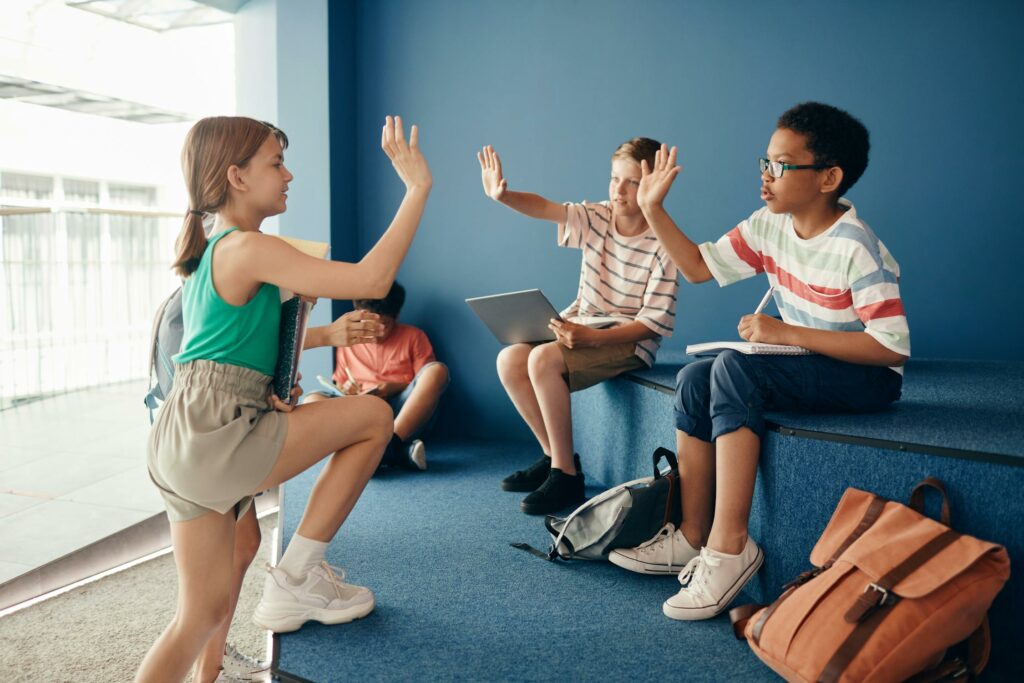
Strategies to Enhance Social Interaction in Children with ASD.
Like most individuals, those with Autism Spectrum Disorder (ASD) desire friendships and social engagement. However, social isolation is prevalent among people with autism due to challenges in communication, social interaction, empathy, and emotional expression. These difficulties can hinder their integration into society.
In ASD, communication and social interaction may be challenging due to neurodivergence, leading to differences in modulation, tone of voice, and gaze maintenance. This can result in misperceptions of being shy, inadequate, or rude.
But don’t worry, here you will find useful strategies to enhance your Superkiddos’s social interaction.
Discover 7 approaches to improve ASD’s interpersonal skills:
1. Improve your communication
Use simple language, talk about mutual interests, and allow time for responses.
Remember to be literal and obvious when choosing the words with which you communicate with your child. Say exactly what you mean. Talk with short phrases such as “wheel the ball” or “throw the ball”.
2. Use Visual Supports
Many children with the autism spectrum respond well to visual information. Visual information can be processed and referred to over time, while oral communication is instantaneous and disappears quickly.
Visual supports are concrete signals that help to communicate and develop language skills. They can include the use of symbols, photos, written words and objects to help children with autism learn and understand language, process information and communicate.
Arasaac is an excellent option to find pictograms.
3. Social Skills
Incorporate interactive games and recreational activities to promote communication.
All children learn by playing, and that includes children within the autism spectrum disorder. The interactive game is a great opportunity to enhance communication.
4. Music Therapy
Utilize music therapy to improve communication and relationships.
Studies have demonstrated the great effectiveness of this therapy practice in the ASD.
5. Role-Playing
Engage in role-playing to practice social and communication skills in a safe environment.
This is recreate different situations to help the child tell things she/he has experienced in a certain place.

The role play is also an excellent way to teach desirable behaviors, this is a form of play that involves assuming roles and interacting with others in a simulated way.
For children with autism, role play can be especially significant, since it provides them with a safe and controlled environment to experiment and practice social and communication skills in a playful and non-threatening way.
6. Use Positive Reinforcement
This tool is useful for teaching desirable behaviors effectively.
Positive reinforcement is one of the most common concepts found in ABA therapy; refers to the idea that something that happens after a behavior (anything a person does) has an impact on that behavior occurs again in the future. When a behavior is followed by a positive reinforcer, the positive behavior will occur again.
Read more about Positive Reinforcement HERE.
Positive reinforcement favors the creation of habits, teaches appropriate behaviors and improves the socialization of children diagnosed with autism.
7. Extracurricular Activities
Encourage participation in activities to enhance socialization, like sports or group dynamics.
Improving socialization in children with autism can lead to various benefits, including making friends, developing interests, and enhancing communication skills.
However, you must remember that progress may be gradual, requiring patience and support.
For specific questions or additional assistance, feel free to CONTACT US!
We are here to support you on this journey towards your child’s development.
Together, we make it better!